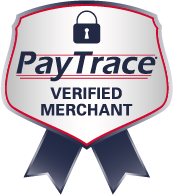Posted by Greg Sherwood on Fri, Jun 21, 2013 @ 02:15 PM
Marketing Evolution
Marketing has had many evolutions, and a longer history than most people actually realize. In the past 30 years, marketing’s evolution has accelerated at a very rapid pace with all of the digital marketing opportunities. Today, we, as consumers, are targeted relentlessly through digital mediums, physical advertisements, and throug audible airways in our everday lives that we might not even realize all the product and brand placements that are in place. To get back to the roots of marketing, and recap on just how far it has really come, this is the brief history of marketing.
-
1450
The beginning of print marketing – Gutenberg invents moveable type, making mass printing possible.
-
1730
Magazines emerge for a new type of print marketing. The first magazine created was published in 1731, in London. It was called The Gentleman’s Magazine and is considered to be the first general-interest magazine.
-
1839
Posters become extremely popular and were banned in London because they were advertising on private property. In turn, London began using humans as billboards by wearing sandwich boards with their advertisement on them.
-
1867
This was the year that billboards were starting to be leased.
-
1922
On February 1922, AT&T announced that they would be selling advertising spots on the radio. WEAF of New York aired the first paid radio commercial.
-
1941
The first recorded television advertisement was broadcasted in the United States on July 1, 1941. The watchmaker Bulova paid $9 for a placement on WNBT, a New York station before a baseball game between the Brooklyn Dodgers and Philadelphia Phillies.
-
1946
The first telephone calls from marketers were made from automobiles. The Bell System’s – Mobile Telephone Service – inaugural call was made on June 17th in St. Louis, MO.
-
1973
While at Motorola, Dr. Martin Cooper makes the first hand-held mobile phone call. He is responsible for the development of the cellular phone and brought it to the market.
-
1984
Guerrilla marketing is used to generate buzz and in 1984 guerrilla marketing become popular through a book called Guerrilla Marketing, written by Jay Conrad Levinson, who coined the term.
-
1985
Desktop publishing makes print advertising even easier by launching an Apple LaserWriter printer, and later would introduce PageMaker software from Aldus.
-
1994
The first automated, large-scale commercial use of spam was created, which was advertising their service of enrolling people in a green card lottery. The U.S. government allocated a limited quantity of green cards to certain non-citizens, so these lawyers offered to do the necessary paperwork for free.
-
1995
Yahoo! was launched as a search engine on March 1st. Alta Vista search was launched as an internet search engine on December 15th by Yahoo!.
-
1996
First recorded use of the term search engine optimization (SEO). Webmasters began optimizing sites for search engines. Initially, all a webmaster had to do was submit the URL to the search engines to haeve them crawl it.
-
1998
Google was launched as a search engine. MSN search engine was launched.
-
2003
MySpace was founded in August. LinkedIn was launched on May 5th. Can-Spam Act was signed on December 16th. This act was the first national standard for the sending of commercial emails.
-
2004
Facebook founded in February. It was founded by Mark Zuckerberg with his college roommates. Facebook was initially created for connecting between college students.
-
2005
Google begins personalized search results. When a user is logged into a Google Account, all of his or her searches on Google Search are recorded for their web history and will help for a better user experience by personalizing searches.
-
2006
Twitter was created in March 2006 by Jack Dorsey. The original name before twitter was twttr.
-
2009
Google Instant is a feature that displays suggested results while the user is typing in their search query and launched in 2009.
-
2011
Google+ is a social network and identity service and launched on June 28th. Google Panda was a change in Google’s search results ranking algorithm that was first released in February 2011.
Greg Sherwood is CEO of DBC Digital, a marketing agency based in Denver, Colorado. With over 30 years of marketing experience with traditional and inbound (internet) marketing, Greg helps mid-sized businesses get a better return on their marketing dollars.
You can reach Greg at (303) 357-5757 or at dbc@dbcdigital.com








